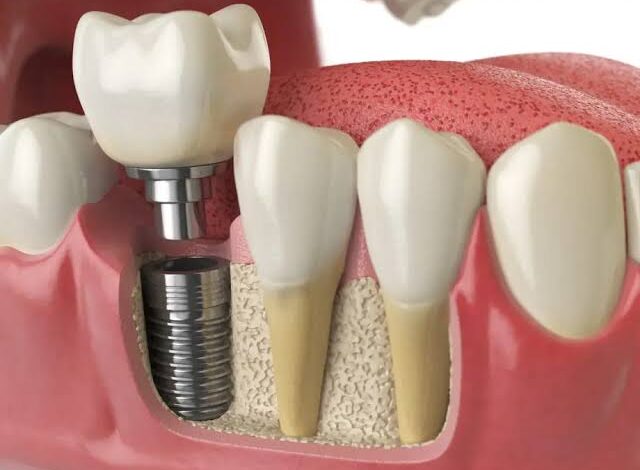What’s the Process for Dental Implants?

Dental implants are a reliable and long-lasting solution for replacing missing teeth. They improve functionality, restore your smile, and provide a natural look and feel. But what does the dental implant process involve? Below, we’ll break down each step so you know exactly what to expect on your journey to a restored smile.
Initial Consultation and Assessment
The journey to dental implants begins with a comprehensive consultation and assessment.
Oral Health Examination
During this visit, the dentist evaluates your oral health, checking for conditions that may impact implant success. This is a crucial step to ensure that implants are a viable option for you.
X-rays and Imaging
The dentist may use X-rays or CT scans to assess your jawbone structure and determine the optimal placement for the implants. These images provide a detailed view of the bone and surrounding structures, allowing for precise planning.
Treatment Planning
After evaluating your oral health and reviewing imaging results, your dentist will create a customised treatment plan. This plan considers your goals, any preparatory steps needed, and the desired outcome of your treatment.
Preparatory Procedures (If Needed)
In some cases, additional procedures are necessary to prepare the mouth for implants.
Tooth Extraction
If you have any remaining damaged or decayed teeth, they may need to be removed before implant placement. This is often a simple procedure but essential for creating a healthy foundation.
Bone Grafting
If your jawbone lacks sufficient density or volume, bone grafting may be required. Bone grafting builds up the jawbone to ensure it can support the implant securely. This step may add a few months to the treatment timeline but greatly increases implant success.
Implant Placement Surgery
Once you’re ready, the implant placement surgery takes place, marking a significant step in the process.
Anaesthesia and Sedation Options
To keep you comfortable, your dentist will offer anaesthesia or sedation options. Local anaesthesia is typically used, and sedation options are available if needed to help you relax.
Insertion of Titanium Implant
During the procedure, a titanium post is surgically inserted into the jawbone. This implant serves as a root replacement for the missing tooth, creating a stable foundation for the restoration.
Healing and Osseointegration
Following surgery, a healing period is essential to allow osseointegration—the process where the implant fuses with the jawbone. This typically takes 3–6 months and is vital for ensuring the implant’s durability and stability.
For more information on the implant placement process, visit your local Lane Cove Dentist, who can provide further details on what to expect.
Placing the Abutment
After osseointegration is complete, an abutment is placed on top of the implant.
What is an Abutment?
The abutment is a small connector piece that links the implant with the crown, providing a solid base for the artificial tooth.
Attachment Process
The abutment is attached to the implant in a simple procedure, setting the stage for the final crown placement. Some patients may require a few weeks to heal after this step.
Crown Placement
With the abutment in place, it’s time to add the custom-made crown.
Customised Dental Crown
The crown is designed to blend seamlessly with your natural teeth in shape, colour, and size. It is created based on impressions of your teeth to ensure a perfect fit.
Crown Attachment
The dentist securely attaches the crown to the abutment, completing the implant process. Minor adjustments may be made to ensure a comfortable and natural bite.
Aftercare and Maintenance
Proper care is essential to maintain the health and longevity of your new dental implant.
Healing and Recovery Tips
In the days following your procedure, follow any recovery tips provided by your dentist. This may include managing discomfort with prescribed medications and keeping the area clean to prevent infection.
Long-term Care
To keep your implant in optimal condition, regular dental check-ups and daily oral hygiene practices are key. This includes brushing, flossing, and avoiding habits like teeth grinding or chewing on hard objects.
Expected Lifespan of Implants
With diligent care, dental implants can last many years, often a lifetime, providing a durable and reliable solution for missing teeth.
Now What
The dental implant process is carefully designed to ensure a lasting and functional result. From consultation and surgery to recovery and aftercare, each stage plays a vital role in the final outcome. If you’re considering dental implants, schedule a consultation to discuss your options and take the first step toward a restored smile.
Keep an eye for more news & updates on FreshTodayMagazine!





